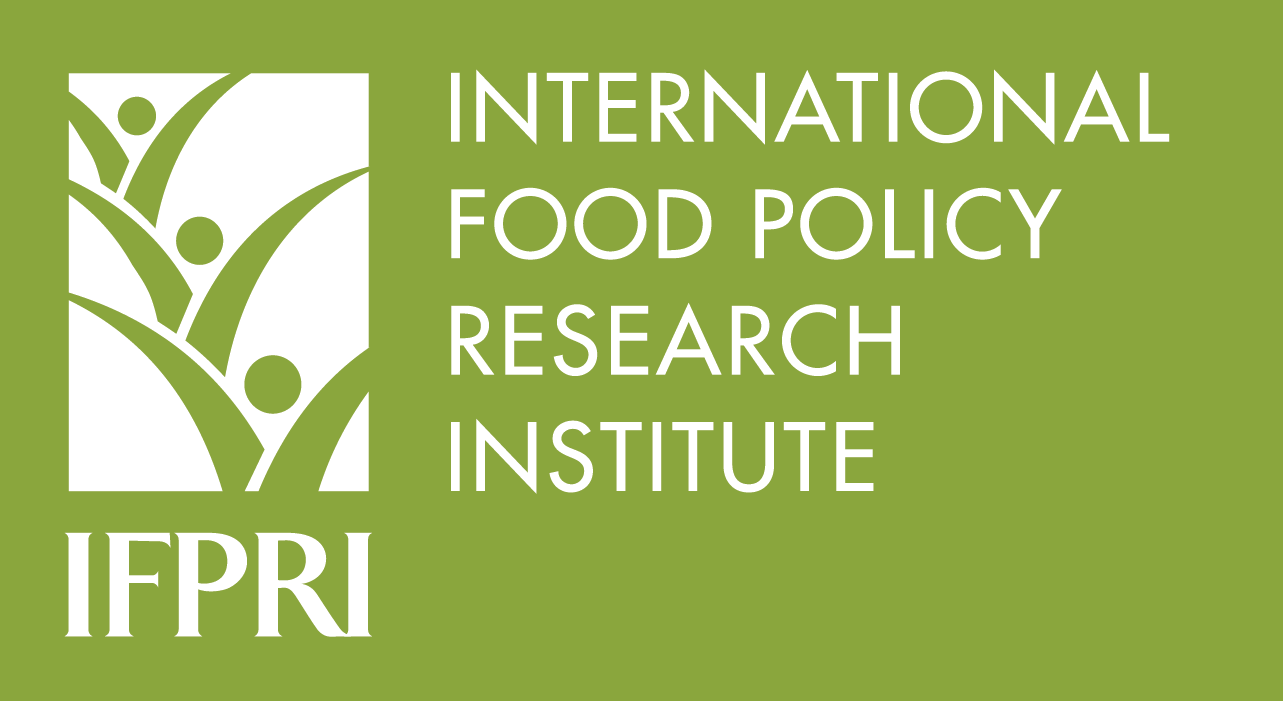Focal point
Location
About IFPRI
The International Food Policy Research Institute (IFPRI) provides research-based policy solutions to sustainably reduce poverty and end hunger and malnutrition in developing countries. Established in 1975, IFPRI currently has more than 500 employees working in over 50 countries. It is a research center of theCGIAR Consortium, a worldwide partnership engaged in agricultural research for development.
Vision and Mission
IFPRI’s vision is a world free of hunger and malnutrition. Its mission is to provide research-based policy solutions that sustainably reduce poverty and end hunger and malnutrition.
What We Do
Research at IFPRI focuses on six strategic areas:
- Ensuring Sustainable Food Production: IFPRI’s research analyzes options for policies, institutions, innovations, and technologies that can advance sustainable food production in a context of resource scarcity, threats to biodiversity, and climate change. READ MORE
- Promoting Healthy Food Systems: IFPRI examines how to improve diet quality and nutrition for the poor, focusing particularly on women and children, and works to create synergies among the three vital components of the food system: agriculture, health, and nutrition. READ MORE
- Improving Markets and Trade: IFPRI’s research focuses on strengthening markets and correcting market failures to enhance the benefits from market participation for small-scale farmers. READ MORE
- Transforming Agriculture: The aim of IFPRI’s research in this area is to improve development strategies to ensure broad-based rural growth and to accelerate the transformation from low-income, rural, agriculture-based economies to high-income, more urbanized, and industrial service-based ones. READ MORE
- Building Resilience: IFPRI’s research explores the causes and impacts of environmental, political, and economic shocks that can affect food security, nutrition, health, and well-being and evaluates interventions designed to enhance resilience at various levels. READ MORE
- Strengthening Institutions and Governance: IFPRI’s research on institutions centers on collective action in management of natural resources and farmer organizations. Its governance-focused research examines the political economy of agricultural policymaking, the degree of state capacity and political will required for achieving economic transformation, and the impacts of different governance arrangements.
Research on gender cuts across all six areas, because understanding the relationships between women and men can illuminate the pathway to sustainable and inclusive economic development.
IFPRI also leads two CGIAR Research Programs (CRPs): Policies, Institutions, and Markets (PIM) andAgriculture for Nutrition and Health (A4NH).
Beyond research, IFPRI’s work includes partnerships, communications, and capacity strengthening. The Institute collaborates with development implementers, public institutions, the private sector, farmers’ organizations, and other partners around the world.
Resources
Displaying 591 - 595 of 1521Assessing the long-term impact of microcredit on rural poverty
In recent years, microfinance institutions are seen as beacons of hope to help eradicate poverty through, among others, providing credit to poor rural households. Availability of small but repeated loans is, in the long-term, expected to impact on poverty. However, decades after the introduction of microfinance institutions into many rural areas, there are still questions as to what extent such long-term benefits are realized.
Gender Mapper
A "gender map" of agriculture in Sub-Saharan Africa in order to better understand how to target agricultural interventions to women and men farmers.
Regional analysis of communal river diversion: Potential for expansion in Sub-Saharan Africa
Sub-Saharan Africa (SSA) faces great challenges in development, including the highest poverty rate in the world, food insecurity, and malnutrition. Given that agriculture is the single most important source of rural livelihood in Africa, an agricultural growth strategy will go a long way to reducing hunger and poverty on the subcontinent. Among the numerous challenges to enhancing agricultural production in SSA is the large spatial and temporal variability and availability of water resources. Currently, agriculture in SSA is predominantly rainfed.
Regional analysis of motor pumps: Potential for expansion in Sub-Saharan Africa
Sub-Saharan Africa (SSA) faces great challenges in development, including the highest poverty rate in the world, food insecurity, and malnutrition. Given that agriculture is the single most important source of rural livelihood in Africa, an agricultural growth strategy will go a long way to reducing hunger and poverty on the subcontinent. Among the numerous challenges to enhancing agricultural production in SSA is the large spatial and temporal variability and availability of water resources. Currently, agriculture in SSA is predominantly rainfed.
Unattended but not undernourished: young children left behind in rural China
The unprecedented, large-scale, rural-to-urban migration in China has left many rural children living apart from their parents. Yet the consequences for child development of living without one or more parents due to migration are largely unknown. In this study, we examine the impact of parental migration on one measure of child development, the nutritional status of young children in rural areas. We use the interaction terms of wage growth in provincial capital cities with initial village migrant networks as instrumental variables to account for migration selection.



